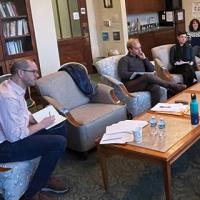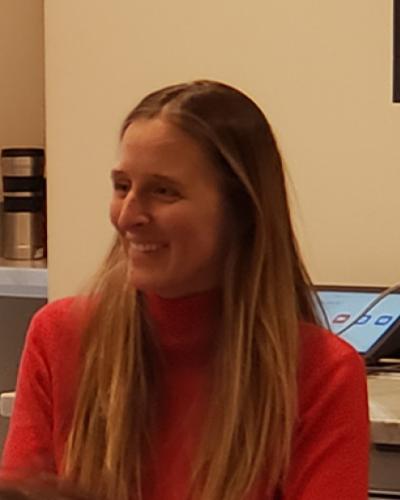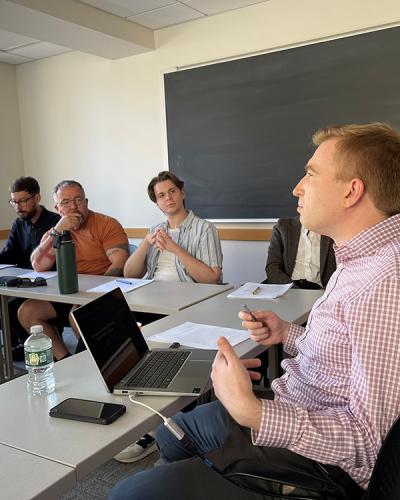On January 26th, 2018, Leigh York (Cornell University) discussed her paper “Transmedial Storytelling in Nineteenth-Century Germany: Karl May’s Fictional Universe.” York argued that Karl May’s (1842–1912) little-known novel Auf der See gefangen: Ein Kriminalroman, which appeared in 1878, explains the basis of May’s popularity and success, while also marking the birth of a new form of transmedial storytelling which is still important for popular culture and mass media today.
According to York, the episodic, open, and “loosely-connected structure” of the thirty-two installments of Auf der See gefangen causes some episodes to reach beyond the confines of the novel. In such expansions, argued York, lie the foundations of May’s larger universe of interconnected narratives and other media, which he continued developing throughout his life. As York remarked, such “transmedia world-building” is indeed “unexpectedly contemporary.” At the formal as well as the narrative level, it anticipated the multi-media universes that dominate popular culture today, among them such outfits as the Marvel Cinematic Universe, Lucasfilm, and the Matrix franchise.
York also pointed out how the rise of the periodical press in the late eighteenth and nineteenth centuries led to changes in the novel and narrative literature more generally. Drawing on the scholarship of Helmut Müller-Sievers, Nicolas Pethes, and Sean Franzel, York juxtaposed the German novel’s experiments in serialization and their incorporation in the periodicals’ heterogeneity and fragmentation to French and English realist serialization, which emphasized interrupted, but “irreversible forward motion.” She also stressed that the serialization in question did not amount to the subsumption of fragments under one unified narrative frame.
Analyzing the first installments of Auf der See gefangen, York emphasized the heterogeneity between the various episodes of May’s text, arguing that, as a whole, the novel resembles Pethes’s notion of Archivliteratur. York showed in some detail how May’s narrative structure allows for continuity between installments by connecting different episodes through a moment of suspense, a “mini-cliffhanger,” and immediate resolution and satisfaction at the beginning of the subsequent episode. However, after quickly resolving the cliffhanger, May frequently pivots to a new storyline. Rather than integrating the different parts and narratives into a structured whole, May continually introduces new problems and questions, and thus produces “a heterogenous surplus of narrative material.” Combining these surplus elements, he creates an “episodic series of loosely-connected adventures”.
May’s expansive narrative material became the basis for later narrative works, such as short stories, novels, and trilogies that appeared in periodicals, as Kolportageromane, and in book series, forming “the fantasy of a fictional world that exists beyond the novel.” York contended that elements like characters, places, objects, and even types of humor from the early Auf der See gefangen form a “chain of associations” that link May’s narrative fiction and other media within one universe. She noted that already during May’s lifetime, his narrative fiction and other media were supplemented by other artists and writers, who created sculptures, dramas, and card games. Even today, franchised films, radio plays, comic books, television series, toys and video games take place in the narrative universe May created. May’s work both produced and derived from this fictional universe, which subsequently became a pop cultural phenomenon that prefigured contemporary transmedia storytelling.
In her lively presentation, Leigh York also addressed questions of how unresolved storylines prompt reader participation; the status of worldbuilding and storytelling in narrative theory; and the role that May’s celebrity status has played in holding the disparate parts of his fictional universe together. (Jacy Tackett)




